Horses in the high country
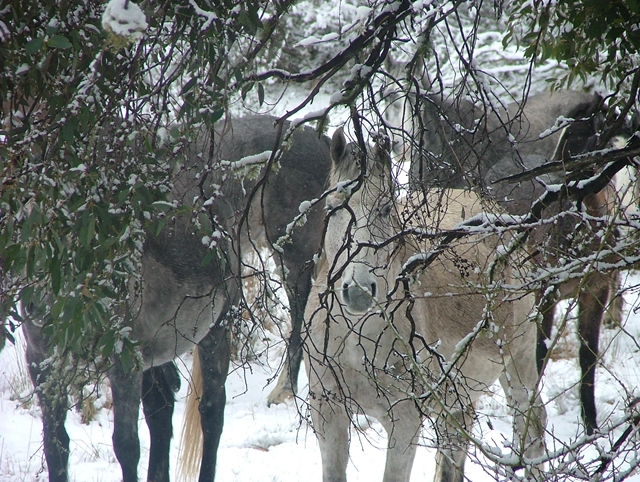
Is there a ‘dark side’ to the presence of horses in Australia?
Recently I was contacted by Dianne Thompson who had read about our Horses in Australia project and Spirited: Australia’s Horse Story exhibition. Dianne walks regularly in the Australian Alps, and is concerned about the ecological impacts of feral horses in National Parks. In this guest post, Dianne shares her experiences, perspectives and photographs on horses in the High Country.
——————————-
My ancestors were early settlers in Gippsland and my father was a drover in Western Australia. He drove mobs of cattle to the Kimberley meatworks at Wyndham and Mornington. During the 1930s he did three cattle drives along the Mullewa De Grey Route, from Anna Plains Station (on the 90 Mile Beach) to Meekatharra.
Horses have been very important in Australia and there are good aspects to this history, but not all parts of this history are positive.
Unfortunately we have big problems with feral horses in Australia, particularly with very large numbers in Kosciuszko (NSW) and Alpine (Vic) National Parks. Feral horse impacts in our alpine catchments are extremely serious. Massive damage is being done from the source of the Murray River and beyond.
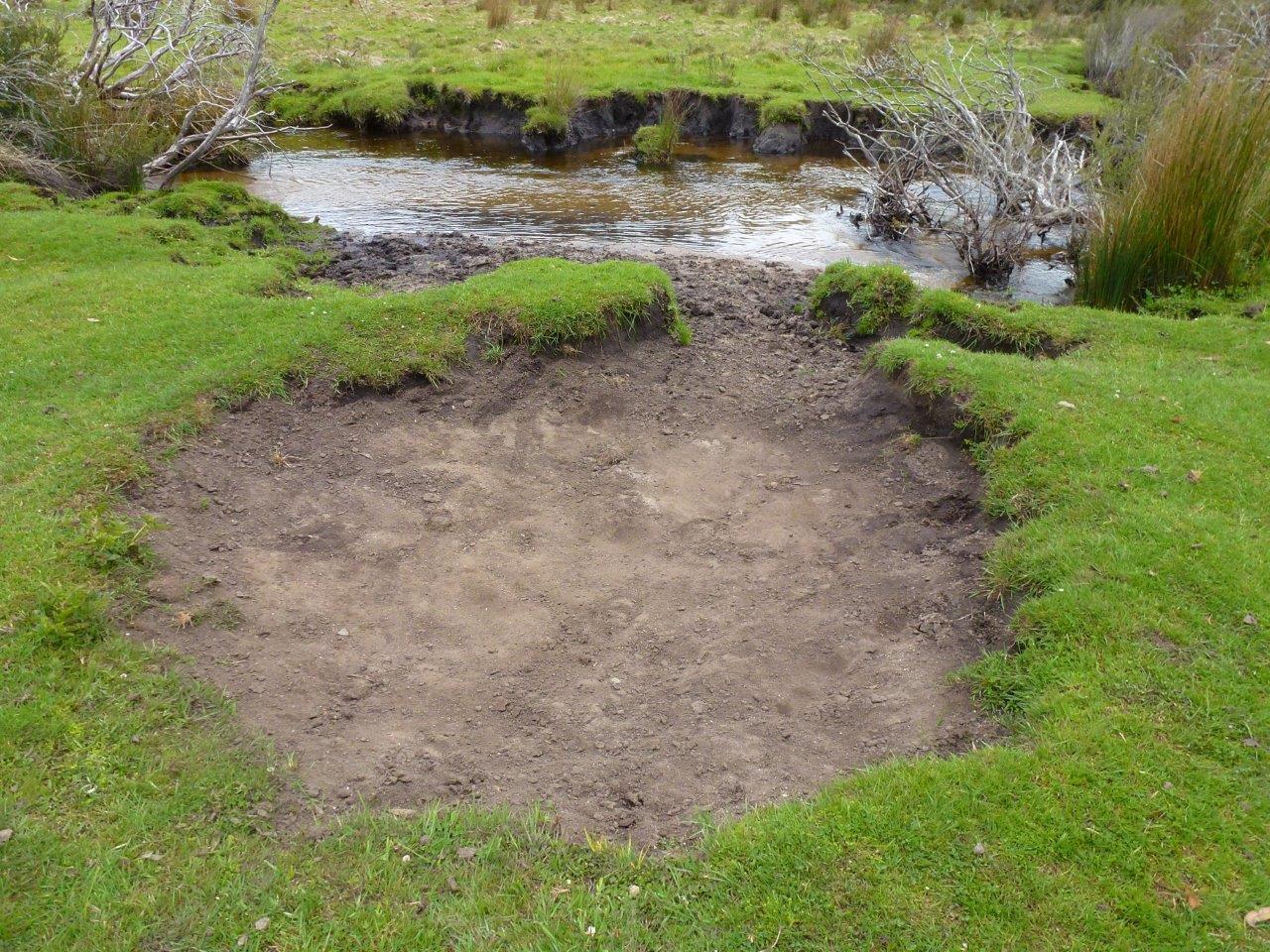
There is a lot of misinformation about the mythology surrounding the Man From Snowy River poem, and no connection between it and the damage that feral horses do to these fragile environments today. Furthermore, Banjo Paterson wrote at a time when people accepted that horses would be allowed to suffer or be injured: “But his hardy mountain pony he could scarcely raise a trot, He was blood from hip to shoulder from the spur”. Also at that time, the so-called Man from Snowy River was in it for the reward money, not for any historical nuance.
The mythology should mean ‘One man, one horse’, not ever-increasing numbers of feral horses and horse riders in national parks. Times and attitudes have changed since then.
Last summer (2013) a party of nine walkers from Canberra and Tasmania undertook a nine day pack walk into southern Kosciuszko National Park (KNP) and the northern part of the Alpine NP. We met parties from Museum Victoria, 4WD Victoria, farmers from Kojonup WA doing the Australian Alpine Walking Track, Club walkers and Latrobe University students – all of whom were shocked at the feral horse damage and its effect on their drinking water (water filters were clogged). There was evidence of damage and dung virtually within 10 metres of anywhere they went (including off track locations).
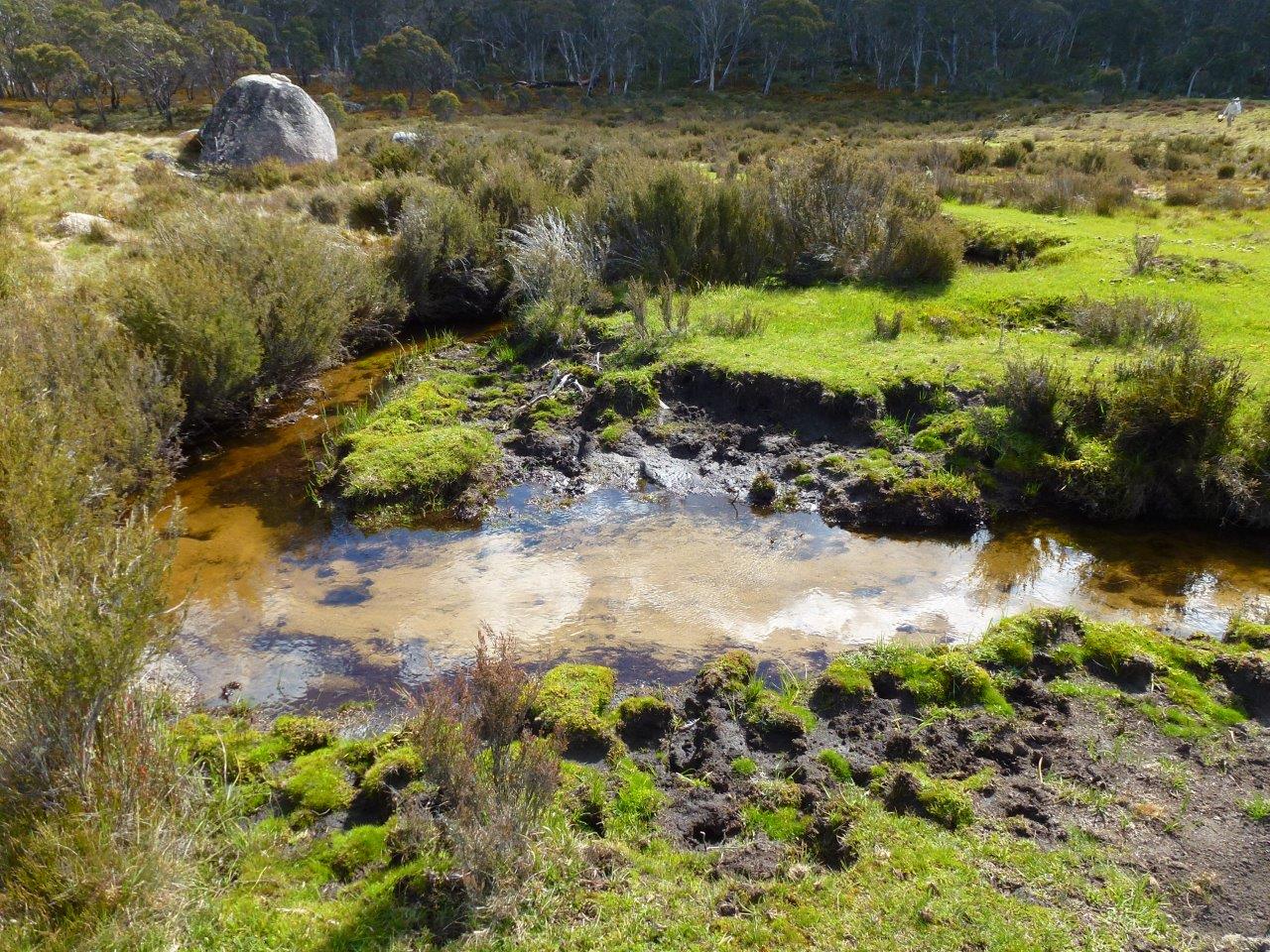
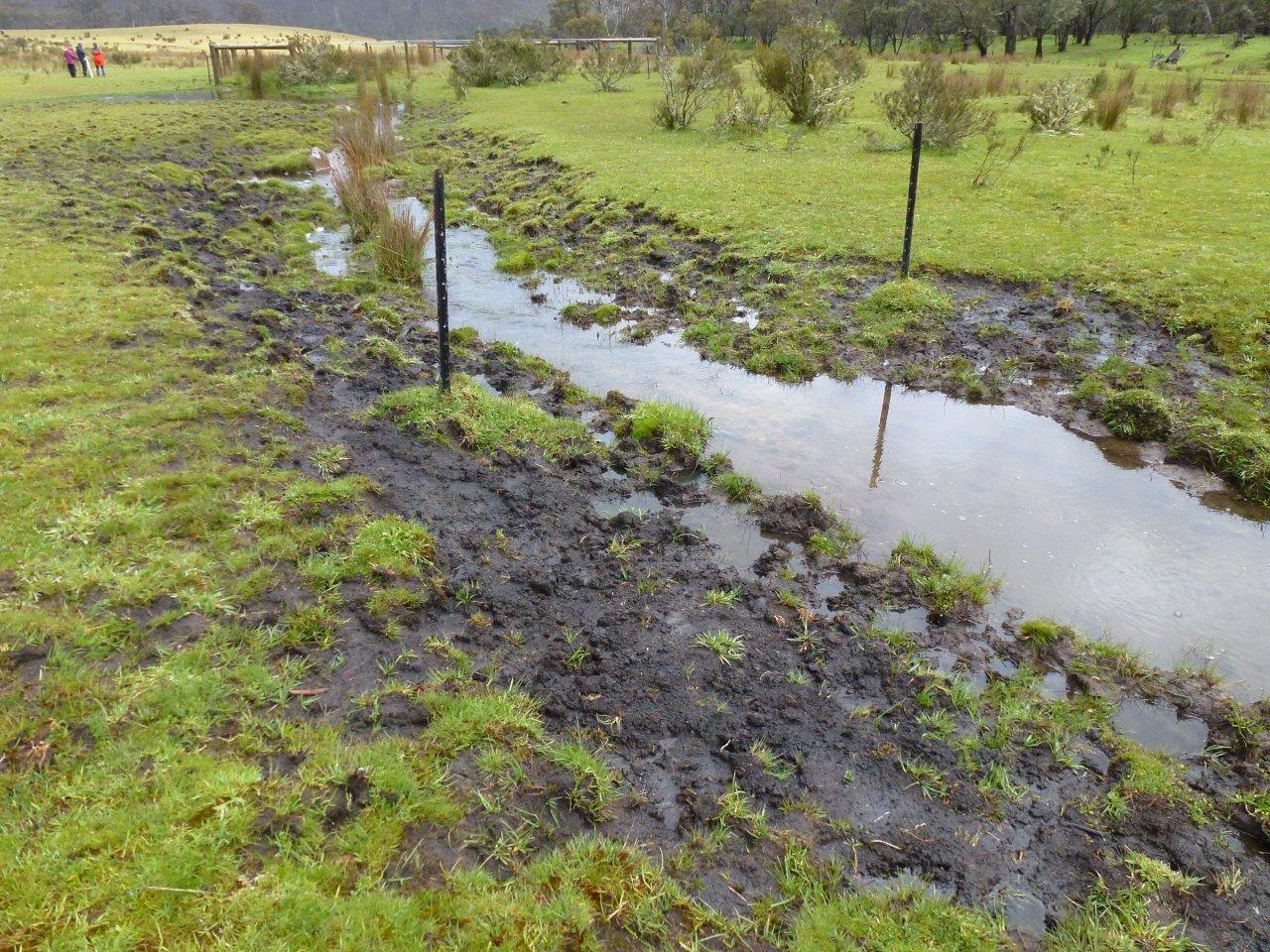
I, and others, believe the public, scientists, and officers of the Museum need to be aware of the extent of and the extreme damage being done by feral horses in the catchments of the mighty Murray, Murrumbidgee and SnowyRivers. The current and long term methods of removal have not been effective or efficient and horse numbers have increased by more than 20% per annum since the 2003 fires. Many wonder whether we have reached the point of no return for rehabilitation. The ‘Caring for our Australian Alps Catchments’ report summarised the potential cost of that damage in terms of water to irrigators, downstream farmers and townspeople as $9.6 billion per year.
A survey of feral horses in these areas has recently been completed and results will soon be available. Populations of around 8000-10000 in both Victoria and New South Wales are expected. Opposition to the only really effective method of control, aerial shooting, is resulting in ongoing and escalating destruction. Unfortunately most horse riding people seem to be unable to see or understand the damage being done, or the magnitude of the numbers of feral horses increasing in our national parks.
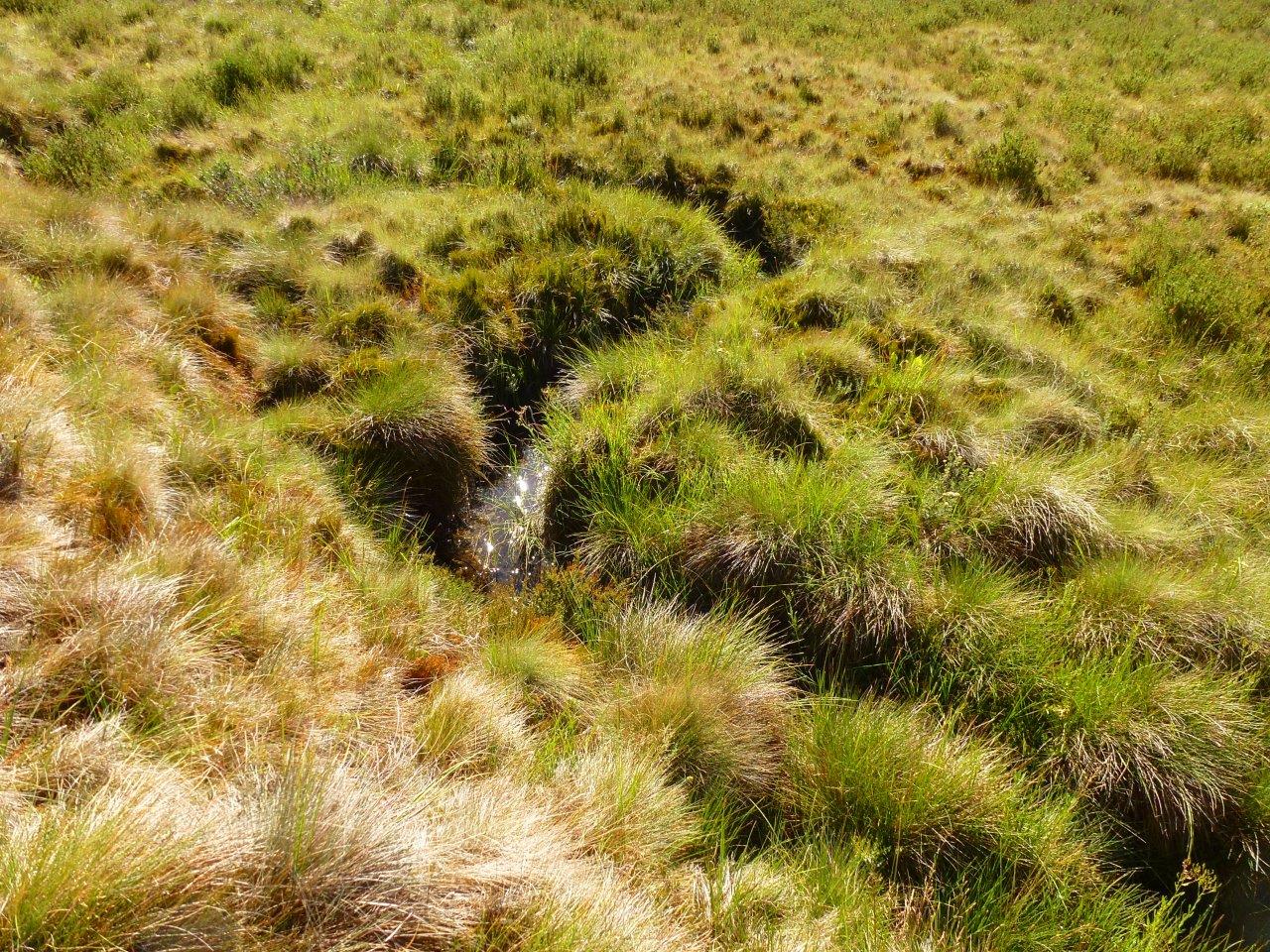
—————————-
There is now a vigorous public debate about Australia’s feral horse populations, their impact, management and historical significance. My thanks to Dianne for her contribution to this important national conversation.
What do you think? Is there a place for horses in the high country? Please leave your comments using the box below. Just a reminder – comments are moderated.
Feature image: Brumbies at the Snowy Wilderness retreat in Jindabyne, NSW 2003. Photograph by Claire Charters, from Wikimedia Commons
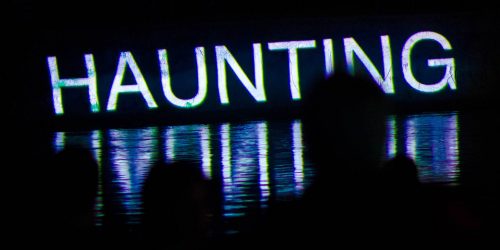

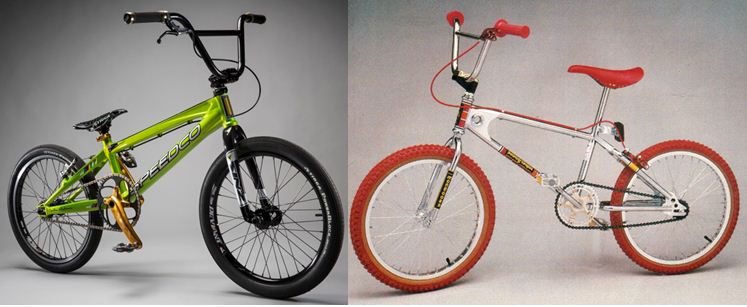

Is there any reason why you did not interview or invite people like Peter Cochran or Leisa Caldwell or John Barilaro or Clive Edwards or ecologists like Craig Downer to write about horses in the high country? The scientific data that has been used in Australia is outdated and tainted by a cultural vendetta against any non native species regardless of how long they’ve been here. The world over has reintroduced the wild horse to areas to mitigate bush fire threats as well as help to reseed areas, leaving the brumby as a scapegoat to take the blame for the damage humans are causing not to mention that Parks is as subject to political/economic wheeling and dealing as any government entity. Their reports are bought and paid for canned research that would not allow for any positive contributions of the horses to be mentioned/included.
I to have seen much of this damage. The only difference is that I have seen the wild boar & deer doing it. Yes horses will use these paths & as a result people like the author will draw these sort of conclusions. Pity they dont get their facts right though,
Ariel culling will never be the answer, it doesn’t matter how ‘effective’ it is, it is inhumane. There is no way any person can humanely kill a moving horse from the air with one shot. Horses will be left suffering many with foals at foot. People need to open there eyes and see that their is more important issues currently facing the high country. And in regards to the bogs; other animals do far more damage, cattle, wild boars etc.Brumbies have a place in the high country and always will.
Brumbies also keep the grass down. If these horses were not here the grasses would be knee high. If a fire got out and these grasses were long it would be like rocket fuel and a major bushfire could be a result- then there would be no bogs at all . These horses play a major part in keeping these grasses down and controlled therefore helping to prevent bushfires .These horses definitely have a place in the high country.
Any feral animal does not belong in national parks (or farmland!), horses are not different or a special case. They cause a lot of destruction to fragile alpine environments and are increasingly getting up higher each season, no doubt due to population increase. One reason for cancelling alpine grazing leases since the 1940’s is to protect the sphagnum bogs which hold water and slow release over the whole year for the snowy scheme. Not sure where Snowy Hydro sits in regard to this nowadays?
Just so you can see it for your self !
http://www.youtube.com/watch?v=4R2Z8urgt60
I live right next to a salt lake at the top of Victoria next to the Murray River. Sixty years ago you could swim in it. Now it is nothing but an eyesore full of salt. Animals didn’t do this. Greedy Councils and greedy people did. I am sick of hearing how horses do all this damage to our fragile environments. Compared to the human race they do more good than harm. The so called experts only experiment on how to fix problems with the environment. I have seen these so called experts make huge mistakes with their quick fix operations, but we never hear of their failures or mistakes that have made the problem even worse. The arrogance of the human race is unbelievable.
hmmm their “feral horse wallow” is actually a feral deer or feral pig wallow or a feral cow crossing its cloven hoves that cause this damage not horses. tbh i think these “scientists” need to open their eyes more the deer ,pigs and feral cattle do more damage to our high country than the horses the only difference being the deer and pigs are long gone out of sight when we’re around and the horses are in plain sight and cop the blame for the damage, they only use these paths as safe crossings horses are incredibly smart animals. you don’t see our domestic horses making paths and damaging paddocks around the place do you ? no because they are not the cause. horses don’t do that sort of damage period, and you cant use the “trained or domesticated ” as an excuse because people keep some breeds like tb’s and stb”s in communal groups where if they were to cause this damage they would be .
Of course there is a place for the brumbies they have been a long time the pigs& wild dogs do far more damage
Commercial interests should not have a say, they also cause similar damage, quite wantonly and give nothing back.
Hi maeleesun, we’d welcome posts from the people you’ve suggested.
The other difference between feral deer, pigs, goats, you name it, and feral horses is that only horses are not culled! And that’s why they are a problem of increasing proportions.
have a look please at this discussion paper. Go to snowycountry.com.au under look under the ‘INFORMATION’ page.
At the moment there is a debate of the future of the High Country Brumby in the Alpine environment. This a a discussion paper prepared for the meeting to be held in Jindabyne Saturday 12th July.
The Brumby has been in existence in the High Country for nearly180 years. The key is management of the asset, not eradication. It is an embarrassment that Australia alone, does not officially recognise or protect its own iconic feral horses.
That may be. But still aerial culling is not the answer. Trap the horses and send then to rescues to get them homes and a use . Dont waste the innocent animals lives by scareing the shit out them and then shooting them from the air its inhumane
also, what happens to the carcass after you shoot the horse? if left to rot, it attracts dogs, foxes and cats. catch 22.
thats exactly right not to mention they dont shoot to kill they only shoot to wound or injure and to top off the cake HORSES DO NOT USE DIRT OR MUD WALLOWS !!! they are not pigs or deer theres a huge difference they will roll in long grass or sand but never close to a waterway and their rolling doesnt do damage like what was pictured.
Shooting horses from the air is barbaric. Why would anyone want to! The other comments have already pointed out that horses do not wallow and actuaaly do more good than harm as has been found out in the U.k. And have been reintroduced to some wild areas to help manage them better. Australia should be proud of it’s horses not try to destroy them.
How do you measure the damage? All ferals create damage including horses, Feral horses are breeding in numbers out of control creating a lot of damage.
And should we be equally proud of our pigs, goats, deer, foxes etc? Why do you think feral horses belong in our national parks landscape?
Bob, they have been in the High country for nearly 180 years, not yesterday. The numbers have to be managed. You must realise how important these animals were–no longer any use? lets shoot them !
One woman concerned about ecological impacts by feral horses…to be honest it is about time we had some independent honest reports stating facts. Horses are definitely the scapegoat at the moment. No mention of feral pigs, deer, dogs, 4wd tracks. I wonder how much damage humans are doing in our national parks??
It would seem that no matter which way you look lately, you’re confronted with cries of “shoot them all” in the media or blogs such as this claiming our Brumbies are the cause of irreparable damage and must be removed.
I think what strikes me as the most ridiculous of all though is that the blame falls on the horses themselves; as if they chose to be reduced from man’s faithful hard working companion to a ‘feral’ pest! All recognition of our inherent responsibility to them, their contribution to our country or accountability for their now precarious position is either overlooked or completely ignored.
The greatest level of ignorance is displayed by our Government though, in their choice not to properly and responsibly manage our brumby populations in the many years since they were considered ‘useful’, populations do not explode overnight nor do management plans write themselves; years of repeating the same flawed approach and expecting different results is equal to insanity.
Many countries have walked this road before us, some choosing to completely remove all traces of their wild horses, only to discover their mistake when the ecological imbalance caused by the horses removal could not be denied, often resulting in the loss of flora & fauna. Reintroducing the wild horses in these areas saw the balance restored and the environment flourish.
Consideration must be given to the unknown; the TRUE number of horses actually in the area, any symbiotic relationships developed over more than a century of habitation or the many undocumented positive effects on the environment attributed to the horses, all crucial factors to consider prior to any form of removal programme.
Historically speaking, these horses are living history and should be acknowledged as such; we have many forms of reparations offered to our war veterans, a national holiday in their honour and well deserved tributes, but what of the horses who carried them? Many will argue they’re not one in the same, however no matter what you believe there is no denying that this country was built on the back of a horse and simply would not be the Australia we know and love without them.
We owe them a greater debt than can be measured and we most definitely owe them a form of management better than aerial slaughter. These are OUR Australian horses, not feral pests.
At the moment trapping is the only method of horse control used in the high country. I agree that it is humane and great care is taken to avoid stress on the animals. But to date the trapping rate has not kept up with the natural growth rate. Additionally, re-homing has become more difficult as fewer people step up to take animals on, particularly older females and males.
Humans are responsible for all of it. We brought in all the feral animals and failed to control them. They destroy habitats and food sources of native animals, as well as killing native species as a food source or just for fun. And now we have people who don’t want to control them- the “pretty ones” anyway- kill an ugly pig but not a “pretty” feral horse! Those opposed to the culling of feral horses are horse owners- the ones that want to ride through National Parks and Wilderness areas spreading weeds and creating erosion tracks. Do those who see feral horses as an Australian icon that has been here for 180 years, also see rabbits, foxes, pigs, cats, deer etc as Australian icons?
Yes of course Tricia, there are big problems with all ferals and it is due to past mismanagement. There is everything to be gained by managing in the Brumby as l’ve set out. It has become adapted to its environment–it is a part of that environment, unlike pigs, foxes, cats, rabbits,–that haven’t had to adapt. Camels and donkeys you can argue also belong in their environment, but the numbers are totally out of control. You cant compare a pig or rabbit to a horse. These are our horses, so we must distinguish between pests and brumbys. Manage the numbers and the problem goes away. The pig does more damage to the bush than a horse will ever do. Horse actually have been proven to spread biodiversity, if the weeds are there in the first place then ALL birds and animals will spread the problem. Don’t restrict the horse and you’ll not have a track degradation problem. They AND the environment are dynamic, not static– the environment changes. The other point is that Brumbys do not need to be at or above the snow line, that part of the ecology can be quarantined, its all about balance, but to think that the Brumby will be sent to oblivion on our say, after all the horse has done for us, is in itself hideous and unjust.
I feel you’ve missed my point Tricia. Yes, humans are responsible for the situation in which our brumbies find themselves, however merely acknowledging our responsibility is not nearly enough if we are to answer that responsibility with ignorance and lethal methods of control, especially given the complete lack of management for many years.
Are we to stand by while the culpable government dept’s sweep the issue under the rug for another 5 years or more, by killing a few thousand from the air? Will it satisfy the critics to know their tax dollars paid for mass murder, leaving behind a veritable feast for the remaining feral animals? Will a small decrease in brumby numbers for a short while compensate for the inevitable increase in wild pigs, foxes, dogs & cats? I think not.
As to your assertion that “They destroy habitats and food sources of native animals, as well as killing native species as a food source or just for fun”, I would strongly argue to the contrary; given the length of time they’ve been present in our high country and the vast area they inhabit, would it not be reasonable to suggest that if they are indeed causing massive irrefutable damage, there would be very little ‘pristine’ or ‘ecologically fragile’ areas left to protect, or even a decline in native animals in the area?
Your suggestion that they kill native species as a food source or just for fun is one I find highly confusing, as I’m sure you’re aware they’re herbivores and as such are not frivolous killers of our native species. In answer to your question regarding other feral pests as icons I emphatically insist there can be no comparison; none of the animals mentioned can share in the feats or accomplishments credited to the horse, none has contributed as equally to our development as a nation.
Hi maeleesun, it’s true that vested interests like some of those you name will have different perspectives, but those of us that care about the mountains can’t afford to ignore the evidence. Contrary to what you say, the science is clear that they are causing damage and their numbers are exploding now that the old graziers are no longer controlling their numbers as they did for 100 years. And no – horses do not help prevent bushfires.
Science isn’t clear Phil. Much of the damage I see are pigs. Overseas study of wild horse populations confirms ecological damage not significant with managed horse numbers. Greenies will bend the science to stop riders in the park.
Hi Maeleesun,
You might be interested to know that while horses were not excluded from the Victorian Alps in 2003, yet there were still devastating bushfires there.
The mention of cultural vendetta is certainly an interesting one – you might find Nick Smith’s article ‘the Howl and the Pussy’ of interest, as he looks specifically at this issue.
I agree, Tricia – and wonder what those opposed to culling brumbies think about culling kangaroos?
ABC Rural looked at this issue a few months ago, and their web page has an excellent run down on the issue, both from those who support, and oppose, culling the brumbies. For those interested, the link is:
http://www.abc.net.au/news/2014-02-27/shooting-brumbies-in-national-parks/5267898
Horses are everywhere but not Corroborree frogs or alpine wildflowers:
I work and recreate in the Kosciuszko NP and I have seen the damage done to our high altitude ecosystems by horses for many years. There are so many horses in the Australian Alps (up to nearly 20,000) and they are detroying bogs, fens, riverbanks, spreading weeds, compacting soils and eating the wildflowers.
National Parks exist for all people to have access to wild ecosystems and so that they are protected for future generations to enjoy. Surley there are enough horses in the world so that they do not have to exist in the Australian Alps as well? There are multiple species of plants and animals (many of them threatened) in the Australian Alps that are having their habitats destroyed by horses. (The science has been done).
Do we really want our high altitude parks to look like horse paddocks or would we all rather have fields of wildflowers and healthy sphagnum bogs and pristine high altitude streams when we visit these parks? We have a choice, but we had better make it soon because if we do not remove horses from the high plains, there will be very little in the way of diverse beautiful alpine ecology left to protect.
The only argument the horse minority pressure group for keeping wild horses on the high plains is our short (200 yrs) European heritage and the use of horses to round up hard hoofed animals. Surely 40,000+ years of Aboriginal use in these parks has more levergae than that?
Quite agree, dogs also had a major role in enabling and maintaining the establishment of grazing across Australia esp the alpine areas. Without the dogs stock could not be moved anywhere. the pro-horse lobby do not seem to mention this or advocate their protection.
I have roamed NSW,ACT and Vic Alps for many years, it is obvious to me that wild horses are increasing quite a bit over the last 10 years and I see them at higher altitudes, above tree lines.
Bob Salijevic
Liz,
do you not think the ecosystem has changed? even when the aborigines used it ? it is not a static system, its dynamic, the horses are now a part of the system. We need to manage the numbers thats all.
The aborigines don’t use the Parks as they did 40,000 years ago. No Brumby group or cattle group, has supported grazing above the snow line.
Hi Richard,
I think ecosystems are always changing, they must to stay dynamic and healthy. I am an ecologist by profession. The issue I struggle with is the capacity of high altitude landscapes to deal with 1000’s of wild horses trampling short subalpine herbfields and yes, these have been changed for the worse since I have been working in the Alps over 25 years. Sphagnum bogs and subalpine herbfields are some of the most diverse and beautiful ecotypes I have ever seen when not grazed and trampled by hard hoofed animals. It breaks my heart to see the damage done to these systems and that these places cannot muster (ha ha) as much love and connection as wild horses. What I say is that we only have Australian high altitude ecological communities in a very small area of Australia and yet horses occur in nearly every country in the world; why do we protect the horse over these very rare and beautiful systems?
If we really have to have wild horses in the Australian Alps (for whatever emotional reason), we must have a lot less that we do now. Something has to be resolved so we can remove or cull these horses to a number where the damage that is done on the high plains is acceptable in ecological terms. The fact is that if we do not start to control the numbers of these wild horses in the Australian Alps we are going to lose (and I would argue we already have) ecosytems that cannot be restored to their diverse and wild beauty. Ecosystems that are in national parks and that were gazetted to be protected. They were not created to protect wild horses.
Richard, this is not about horse riders but amount the damage done by wild horses. It sounds like you can see the importance of “managed” horse numbers, and this is what the science is saying. At the moment the numbers are not effectively managed at all. They need to be.
I agree that feral animals should be controlled & I believe that the horse population is managed. What I did not see was the impact of the ski resorts on the sensitive environment. I have worked and continue to play the High Country. I have a realistic grasp of who wields the power where the air is a bit thinner.
Been out of action: Horses in earlier days were managed by their owners, the graziers and their workers, they were essential transport to manage their leases. Each Autumn they took them back home for winter. From my reading as brumby numbers evolved there were brumby drives to catch for profit. Brumbies were commodities or for sport for the earlier generations, not pets or so-called national icons.
Lets accept that pigs and deer also exist in growing numbers and upset the ecology, no-one objects to trapping or shooting these animals.
Take out the emotion or commercial intent.
It is ignorant, incorrect and irrational to dismiss the damage wild horses do in alpine areas, and yes so do goats, boar, deer, cats, wild dogs etc etc. All these introduced species need to be eradicated or at best reduced in huge numbers if we wish to care for the australian landscape as a whole.
Liz, l haven’t met anyone yet that thinks horses should be high above the snow line. Now, “1000’s of wild horses”—-do we exaggerate to empower the argument?
The Brumby’s are now an adapted species, and its more than an emotional connection.
Yes, apparently Australia is ‘full’ of idiots. Maybe eradication is the answer—
I totally agree, … misguided in romantic notions.
Early settlers used horses as transport, they either rounded up brumbies for sale or elimination as they competed with their grazing stock and stallions would be aggressive towards them and their stock horses. They did select a few and cut them out to become a working horse or pony for the kids.
Poets live on romance, the rest of us have to face reality, there is no difference (romantic notions aside) with any other feral animal in the Park, ie elimination.
Instead of irrational and also unfeeling knee-jerk reaction, we need all the opposite: an intelligent, knowledgeable and at the same time caring and sensitive approach to the wild horses, that can both preserve and restore native Australian plants and animals and at the same time integrate the horses where they belong. This is possible. We must not approach this subject in an “all or nothing” way!
Watch “The Man From Coxs River”, both sides. Then have an opinion
The Man From Cox’s River is an interesting and engaging documentary, however it doesn’t represent the environmental issues under discussion here. In the case of the Blue Mountains brumbies in the film, the issue was their proximity to Sydney’s water supply. The threat they posed was the potential contamination of the drinking water of 4 million people, not ecological damage.
While this film does look at the perspectives of both sides of the debate, in the form of the opinions of two of the main characters, it does not examine any science, nor does it claim to represent the broader issue of brumby management for environmental reasons.
every single Australian would not be hear with out the horse. Australia could not have been settled and made in to the country it is today with out them.and yet many people want to kill them. what kind of people does that make us that we kill someone after they had worked they but off for us but we just kill them because we think we dont need them anymore.
who is going to go to the high country just to see a plant anyway. i personally only make the trip up to the high country to see the wild horses. i just ask the other students around me and they feel the same. the only way people are going to go up there are see the landscape is if we keep the horses there.without them we have a amazing place that no one really wants to see.
what is the first thing that we think of when you think of Australia. the man from snowy river. the horse is part of Australia and we cant just through it away.